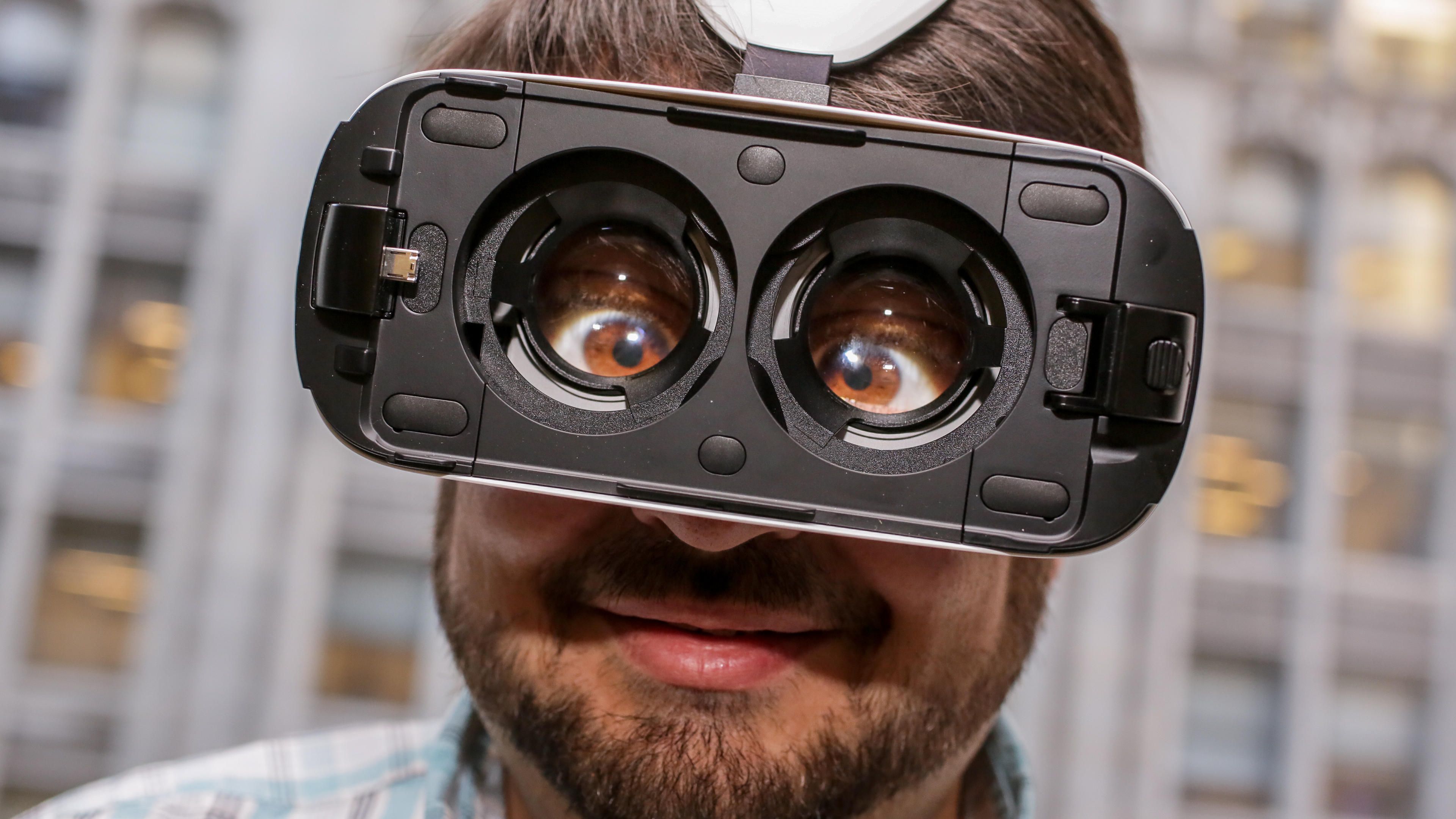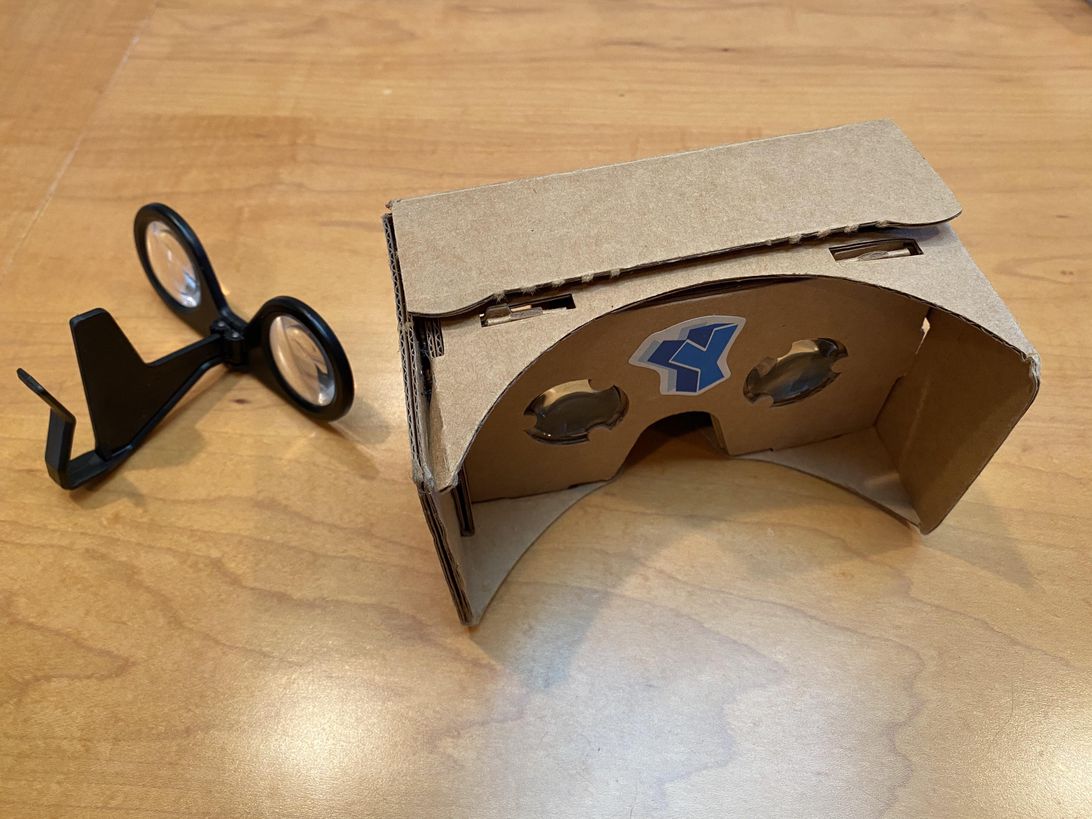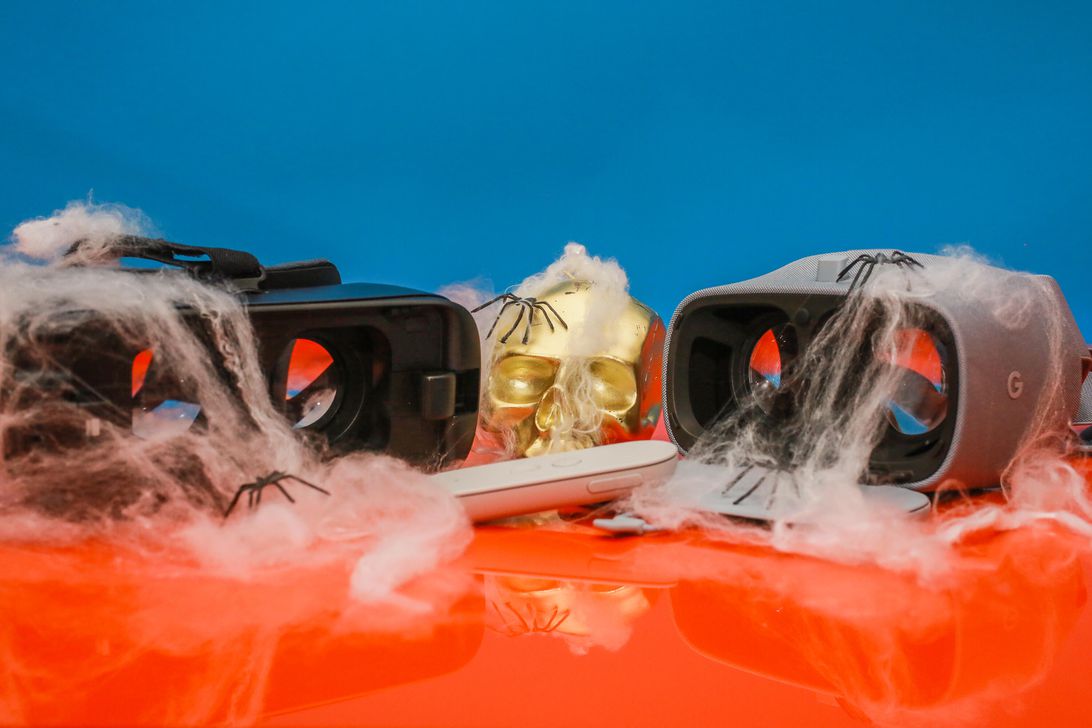Now is the perfect time to bring back phone VR
Once upon a time, everyone wanted us to use our phones as VR headsets. Do you remember this? There was the folding, giveaway Google Cardboard, that ended up in magazines and promo giveaways. There was Samsung's Gear VR, sold alongside every Samsung phone. There was Google Daydream View.

I wrote a eulogy for phone VR last year, because for the most part it had basically died. Gear VR and Daydream are no longer offered for sale. Many current phones don't even work with those old viewers and headsets anymore. New apps aren't being made.
Virtual reality is very much here, but it's taken the form of goggles you connect to your PC, game console, or use as a fully stand-alone system, like Oculus Quest. There are amazing games and apps to get lost in.
I'm home now. I've been home for a month. I sit in my home office, I walk up and down my home stairs, I look through my home things. I peek in drawers at old stuff. I found a couple of pairs of Google Cardboard.

I put my phone into one, and loaded up YouTube, played a video in 360 degrees. I peeked through, and saw my fuzzy but totally working little picture window to a roller coaster I wouldn't be riding anytime soon.
The problem with VR headsets now isn't that they aren't compelling -- it's that they're expensive and hard to find. Many VR headsets are sold out or having production delays due to COVID-19. The top ones can cost $1,000 for a headset, controllers and sensors. And even if they were in strong supply, we've entered a period where lots of people are cash-strapped and even out of jobs.
That's why phone-based AR apps, while kind of silly and gimmicky, are now so popular. AR animals in your home? People care about that. Anything to keep the kids entertained...and yourself, too.
VR used to be a lot easier to access. This is the time to bring phone VR back.
In a sense, it's still here. Google Cardboard is still sold, and so are a lot of other little viewers. One that I always liked looks like a plastic clip-on pair of glasses for your phone, and makes it even easier to attach to a variety of phone sizes and shapes. It works like a little stereoscopic viewer, and does just well enough to work with a lot of YouTube videos.
YouTube is the killer phone VR app right now. Google still has Cardboard VR support in its app, and tapping on a goggle-shaped icon in the lower-right corner brings up the split-view mode you'd need. Plenty of 360-degree and 180-degree 3D videos are around, if you hunt. There's also a whole YouTube VR channel.
The plastic clip-on viewer I have here exists via third-party sellers on Amazon for around $8. I haven't ordered and tried them all, but they're out there -- and so are plenty of cardboard and plastic goggle options. You know, the sort of junk that filled stores for years and lowered the quality level for what VR should have been.
But how quickly my opinion has changed. Any port in a storm can be helpful, and even a basic pair of goggles could offer a moment of discovery or escape.

Google Daydream and Samsung Gear VR were even better. In lots of ways, the games and apps those could play were pretty close to what even Oculus Quest offers, minus the full-room movement. I haven't played on Gear VR or Daydream in years, but the little one-hand remote and sit-and-look-around style of those headsets was easy to use and easy to introduce to kids or grandparents. Those goggles cost $100 or less. Sometimes they'd be given away with a new phone purchase. Why not adapt those now to fit newer phones, and lead an initiative to drop more videos and experiences into those headsets? Or, at least, find content that already exists out there and bring it into those platforms?
Oculus Go, the VR headset before Quest, was a standalone version of that same idea: You don't move around, you just turn your head and point your magic wand controller. The Go, it turns out, is still pretty great too. I tried a handful of games recently, and the kids loved diving in for a bit. For 360-degree videos like Tribeca's virtual film festival, it can be an excellent portable immersive movie theater. The resolution isn't as crisp as your own big-screen TV, but it's not bad.
The very best VR is still in headsets like Oculus Quest, which feel like a portable game console and can even be used for fitness. But at $400 (if you can even find it), it's not something most people can consider. I recognize that, even as I recommend the best VR games right now, and the best VR headsets.
But if there's a bit of fun for $10, one that can open a door to new worlds, there's no better time to steer VR back a bit to that spirit -- at least for now. Cheaper headsets that plug right into phones may be on the horizon eventually, but they're not here yet. In the meantime, we have to make do with what we have. And when it comes to VR, most people don't have very much at all.
You should read it
- This is everything you can do in Samsung Galaxy S9 / S9 + AR
- Invite you to experience virtual reality web platform on Android
- Top cheap quality virtual reality glasses
- 4 development trends of virtual reality technology in 2019
- Experience with 5 applications for virtual reality glasses
- 5 cool, free virtual reality apps for iPhone
- Invite Firefox Reality experience, the browser for virtual reality world
- Custom tips for virtual navigation keys on Samsung phones are more convenient
May be interested
- How to download Perfect World VNG for phones and PCs
 perfect world vng, also known as perfect world, appeared in vietnam in 2007 on computers. now you can download and experience the version of tghm on mobile and computer according to the instructions below this article.
perfect world vng, also known as perfect world, appeared in vietnam in 2007 on computers. now you can download and experience the version of tghm on mobile and computer according to the instructions below this article. - Windows Media Player disappears on Windows 10? This is how to bring it back
 the windows 10 fall creators update update was released when windows media player was removed, ending more than 25 years in parallel with windows. however, does it disappear forever? the answer is no and in this article, tipsmake.com will guide you how to bring it back.
the windows 10 fall creators update update was released when windows media player was removed, ending more than 25 years in parallel with windows. however, does it disappear forever? the answer is no and in this article, tipsmake.com will guide you how to bring it back. - How to Backup Android Phone to Google Cloud
 to ensure the data on your phone is safe, you should back up to google cloud - android's online file storage service - every few weeks. go to 'settings' to back up contacts, calendar data, apps, chrome, documents and drive content on your android phone to google servers, and you can back up your photos and videos. save from 'google photos' app.
to ensure the data on your phone is safe, you should back up to google cloud - android's online file storage service - every few weeks. go to 'settings' to back up contacts, calendar data, apps, chrome, documents and drive content on your android phone to google servers, and you can back up your photos and videos. save from 'google photos' app. - Things you should not bring when traveling for a long time
 luggage is an important item when traveling far away. below are some items you should not bring when traveling or going away for a long time.
luggage is an important item when traveling far away. below are some items you should not bring when traveling or going away for a long time. - How to back up and sync Android phone contacts to Google
 with android, we can sync contacts via google contact and bring them to other android devices conveniently and easily. however, how to do it? please see the article below!
with android, we can sync contacts via google contact and bring them to other android devices conveniently and easily. however, how to do it? please see the article below! - 20+ the best back-to-back hairstyle 2020
 20+ best low-waist hair styles. it's really great if you own a low-waist hair, just styling it will make your face more personal and more beautiful. with a horizontal hairstyle, curling tail will bring you sophistication, p
20+ best low-waist hair styles. it's really great if you own a low-waist hair, just styling it will make your face more personal and more beautiful. with a horizontal hairstyle, curling tail will bring you sophistication, p - Review Express Perfect World VNG - The pinnacle of the hottest 3D first half game 2020
 not to let fans wait for a long time, perfect world vng quickly opened the official version right after the successful success of the recent alpha test.
not to let fans wait for a long time, perfect world vng quickly opened the official version right after the successful success of the recent alpha test. - What do you know about Samsung Galaxy S lives?
 in today's article, let's join the network administrator to go back in time to find out about the phone that used to make the wind that time through multiple choice questions.
in today's article, let's join the network administrator to go back in time to find out about the phone that used to make the wind that time through multiple choice questions. - Perfect Cream: Tips for the perfect cake
 here's how to play perfect cream and the note that you need to know in this fun game to spread cream on cake.
here's how to play perfect cream and the note that you need to know in this fun game to spread cream on cake. - Bring 7 old Windows features back to Windows 10
 as windows grows, whenever a major version is released, some old features will be replaced with new features. if your favorite windows feature is no longer 'present' on recent versions, don't worry, the following article will bring 7 old windows features back to windows 10.
as windows grows, whenever a major version is released, some old features will be replaced with new features. if your favorite windows feature is no longer 'present' on recent versions, don't worry, the following article will bring 7 old windows features back to windows 10.










 LG reveals concept for its next flagship phone
LG reveals concept for its next flagship phone Microsoft Surface Neo reportedly won't be released in 2020
Microsoft Surface Neo reportedly won't be released in 2020 On the hands of Realme 6 Pro: The back of lightning, Snapdragon 720G, 6 cameras, 90Hz screen
On the hands of Realme 6 Pro: The back of lightning, Snapdragon 720G, 6 cameras, 90Hz screen LG unveils new design language 'raindrops' for future phones
LG unveils new design language 'raindrops' for future phones The latest poster of Oppo Reno Ace 2 reveals all the design and specifications
The latest poster of Oppo Reno Ace 2 reveals all the design and specifications Which Samsung Galaxy A Series phone is right for you?
Which Samsung Galaxy A Series phone is right for you?